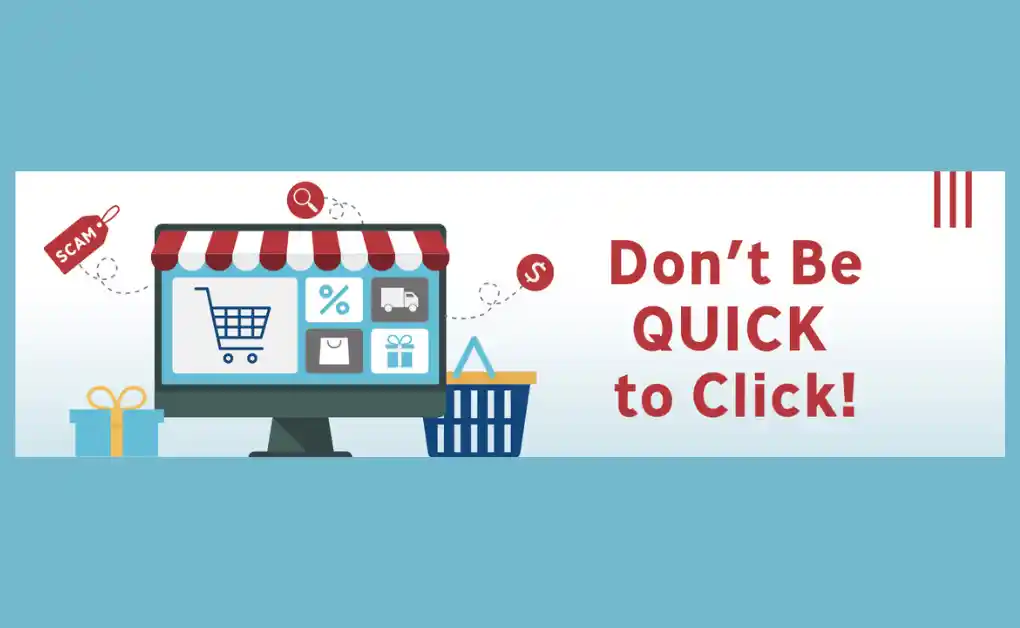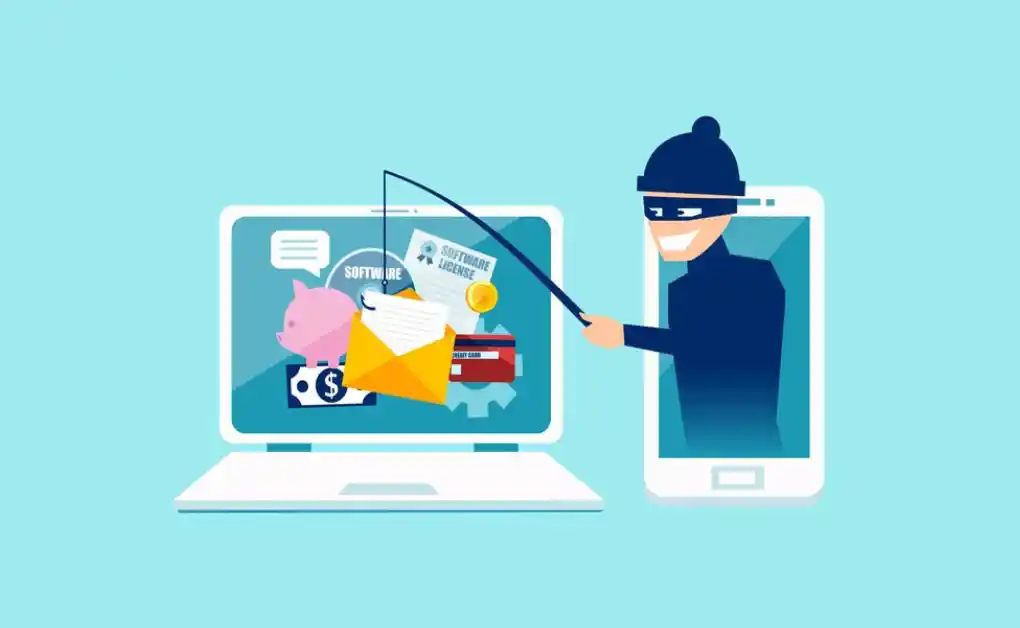As the cost of living crisis continues, more people are turning to second-hand shopping platforms to find affordable alternatives. Sites like Facebook Marketplace, Vinted, and Depop have seen a surge in popularity, offering users a way to buy and sell pre-owned items at a fraction of the cost. In fact, with 3.3 million people searching for “Vinted” last month alone, it’s clear that interest in these platforms is booming.
However, with this growing demand comes a rise in scams. Experts at VPNOverview are warning consumers to stay vigilant when buying or selling on these second-hand sites. Cybersecurity expert Christopher Bluvshtein has shared key red flags to watch out for when navigating these platforms, and he offers advice on how to stay safe while shopping online.
Common Red Flags in Second-Hand Online Shopping
According to Bluvshtein, while online marketplaces are great for saving money, their lack of regulation can make them risky. Here’s a breakdown of the top scams to be aware of when buying or selling second-hand goods:

1. Buyers Asking for Bank Transfers
Bluvshtein explains that one of the biggest risks is buyers requesting to pay by bank transfer. “The funds can be charged back after they’ve received your item,” he warns. To avoid being scammed, it’s best to stick with secure payment methods that offer protection. Accepting cheques is also risky, as they can bounce after the item has been sent.
2. Sellers Requesting ‘Friends & Family’ PayPal Transfers
Another scam to look out for involves sellers asking you to pay through PayPal’s ‘Friends & Family’ option. “It’s unlikely you’ll ever get your item,” Bluvshtein says. Even worse, PayPal doesn’t offer buyer protection for transactions made this way. Always use the standard PayPal payment option when purchasing through these platforms, as it offers some level of security.
3. Buyers Offering More Than the Asking Price
If a buyer offers to pay more than the listed price, it’s usually a red flag. “This tactic is often used to blindside you and pull you into a planned scam,” Bluvshtein explains. The buyer might try to manipulate the situation, making it harder for you to spot the scam until it’s too late.
4. Moving Conversations Off the Platform
One of the easiest ways scammers operate is by moving the conversation off the platform. If a buyer or seller suggests chatting via text or email instead of within the site’s messaging system, it’s a major red flag. “Keep all discussions within the platform where they’re tracked and recorded,” says Bluvshtein. This way, the platform can provide support if anything goes wrong.
5. Private Profiles Without a Photo
A buyer or seller with a private profile and no profile photo is another warning sign. While people have the right to privacy, Bluvshtein points out that having zero information about the person you’re dealing with isn’t a good sign. A lack of transparency should make you cautious, as scammers often hide behind anonymity.
6. Requests to Ship Items Elsewhere
Be wary of anyone asking you to ship an item to a different address than what’s listed on the platform. “A common scam on Depop involves a third party,” Bluvshtein reveals. In this scam, you send the item to a friend of the scammer, who then opens a dispute claiming the item wasn’t received. The scammer often wins the dispute, keeping both the item and their money.
7. Underpriced High-Value Items
It’s always tempting to jump on a great deal, but if you see a high-value item that’s severely underpriced, it’s probably too good to be true. “They’re usually counterfeit,” Bluvshtein warns. While you may think you’re getting a bargain, you’ll likely end up with a fake product—or worse, no product at all.
8. Buyers Who Overpay
This scam works when a buyer overpays for an item and then asks you to transfer the difference back to them. Once you send the money, they initiate a chargeback on the original payment—leaving you out of pocket. “If a buyer pays more than they needed to, it’s a clear red flag,” says Bluvshtein.
How to Stay Safe When Shopping Second-Hand
To avoid falling victim to these scams, Bluvshtein suggests sticking to these basic rules:
- Use secure payment methods: Always choose options that offer buyer and seller protection, like PayPal’s standard payment option.
- Keep communication on the platform: Don’t move conversations to private messages, as this leaves you unprotected if something goes wrong.
- Research the buyer or seller: Check for complete profiles with reviews, photos, and transaction history.
- Trust your instincts: If something feels off—whether it’s an underpriced item or a suspicious payment method—take a step back and reconsider the transaction.

As the demand for second-hand goods continues to grow, so do the scams targeting these platforms. By staying vigilant and following Bluvshtein’s advice, you can protect yourself while still enjoying the benefits of second-hand shopping.
Conclusion
The article underscores the increasing popularity of second-hand shopping platforms amid rising living costs, with consumers flocking to sites like Facebook Marketplace, Vinted, and Depop for affordable alternatives. However, this surge in interest has also attracted a wave of scams, as highlighted by cybersecurity expert Christopher Bluvshtein. The various red flags associated with these scams—such as requests for bank transfers, off-platform communication, and suspicious payment methods—serve as crucial reminders for buyers and sellers to remain cautious.
Bluvshtein’s insights provide a comprehensive guide to recognizing and avoiding common scams in second-hand shopping, emphasising the importance of secure payment methods, keeping conversations within the platform, and thoroughly researching potential buyers or sellers. As the second-hand market continues to expand, questions like “Is Facebook losing its edge?” become more relevant, and staying informed and vigilant is essential for ensuring a safe and rewarding shopping experience. By adhering to these safety tips and trusting one’s instincts, consumers can navigate the evolving landscape of second-hand shopping while minimising the risk of falling victim to scams.
FAQs
1. What are common scams on second-hand shopping sites?
Common scams on second-hand shopping sites include buyers asking for bank transfers, sellers requesting PayPal ‘Friends & Family’ payments, and buyers offering more than the asking price to lure users into fraudulent transactions.
2. How can I protect myself from scams on sites like Vinted or Depop?
To protect yourself, use secure payment methods like standard PayPal, keep communication within the platform, research the buyer or seller, and trust your instincts if something feels off.
3. Why should I avoid bank transfers when selling online?
Bank transfers are risky because funds can be charged back after the buyer receives the item, leaving the seller without payment. It’s best to use payment methods with buyer and seller protection.
4. Is it safe to use PayPal’s ‘Friends & Family’ option on second-hand sites?
No, PayPal’s ‘Friends & Family’ option doesn’t offer buyer protection. Always use PayPal’s standard payment option when making purchases to ensure protection in case of fraud.
5. What should I do if a buyer offers to pay more than the asking price?
If a buyer offers to pay more than the listed price, it’s often a red flag for a scam. Avoid these offers and stick to the original asking price to prevent being drawn into a scam.